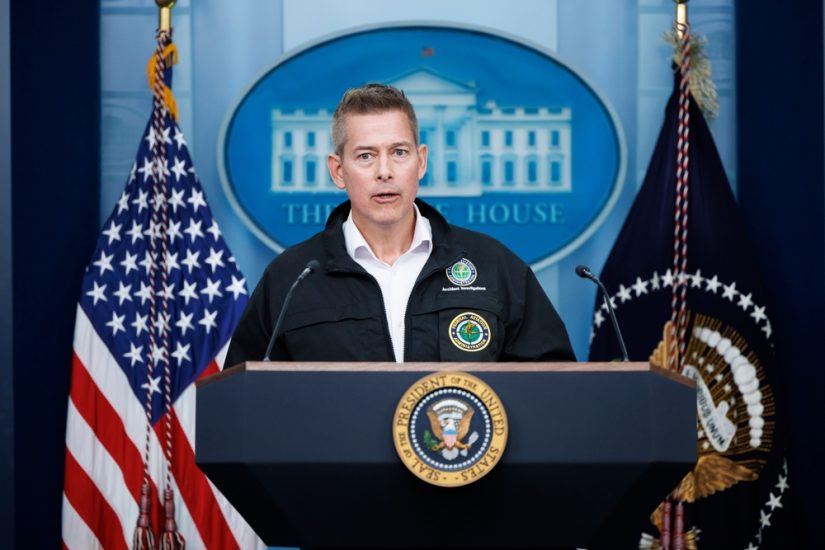The US drone industry has welcomed the news that the Federal Aviation Administration’s (FAA) two proposed rules – Beyond Visual Line of Sight Operations (BVLOS) and restricting UAS operations at a fixed site facility – have been recently submitted to the Office of Information and Regulatory Affairs, a key step towards making these regulatory improvements a reality, according to the US Department for Transportation.
“From drones delivering your packages to conducting critical infrastructure inspections, unmanned aircraft represent the future of aviation. As part of my innovation agenda, we’ve put forward two long-overdue rules that will speed up deployment and enhance safety.” said U.S. Transportation Secretary Sean P. Duffy.
The Association for Uncrewed Vehicle Systems International (AUVSI) said: “This is a critical step in the rulemaking process and a strong signal that the federal government is moving toward a scalable, performance-based regulatory framework to enable routine BVLOS operations across the commercial drone sector, including public safety, critical infrastructure, agriculture, package delivery, and other use cases.
AUVSI CEO Michael Robbins said, “AUVSI commends Secretary Duffy and Administrator Rocheleau for advancing the long-awaited BVLOS and Section 2209 rulemakings to the White House for review. Finalizing these rules is essential to unlocking the next chapter of uncrewed aviation—driving innovation, improving safety, and maintaining U.S. global competitiveness. While this is not the first time the rules have reached this stage, AUVSI has remained deeply engaged throughout, advocating for our members and pushing to move these policies across the finish line.”
“Timely action is critical to give operators, manufacturers, public safety agencies, and others the regulatory clarity they need. A national BVLOS framework will enable safe, scalable commercial drone operations, while a Section 2209 rule will protect sensitive infrastructure without stalling industry growth.”
“We urge OIRA to complete its review quickly. These rules have already undergone significant interagency evaluation, and final action is long overdue. With years of effort behind them, BVLOS and Section 2209 regulations must be finalized now to provide the certainty and momentum the U.S. drone industry needs to grow and lead.”
The Commercial Drone Alliance (CDA) said: “The CDA has actively supported both rules, which provide the regulatory certainty needed to accelerate commercial drone adoption and strengthen the global competitiveness of domestic drone manufacturers. Today’s news follows the CDA’s Commercial Drone Innovation and Security Summit on May 13, where CDA Chief Executive Officer Lisa Ellman called on the federal government to restore America’s leadership in drone technology.
“The CDA applauds the Trump Administration for advancing the BVLOS and Section 2209 rules forward,” said Ellman. “Outdated regulations and regulatory paralysis threaten America’s security and aviation leadership. But with the right framework in place, we can unlock the real benefits of safe, secure, and scalable drone operations for the American people, from medical deliveries and emergency response to infrastructure inspection and public safety. The BVLOS rule especially is a critical deregulatory action which will remove ill-suited regulations that artificially constrain American innovation and ingenuity.”
The purpose of the BVLOS rule is to enable and normalize commercial drone operations that are otherwise prohibited or require individual approval through bureaucratic and time-consuming FAA application processes, says the CDA. Meanwhile, Section 2209 mandates that the FAA establish a process for restricting or prohibiting unauthorized drone operations near critical infrastructure and other sensitive facilities. The CDA appreciates the concurrent movement of both rules, as innovation and security are two sides of the same coin for drone integration.
“This is a crucial milestone to finally right-sizing the low altitude airspace for commercial drone activity,” said CDA Policy Director Liz Forro. “This action will spur much-needed investment in our domestic drone industrial base and relieve the regulatory paralysis that has crippled the U.S. from leading in advanced aviation technology to date. We encourage OIRA to clear both proposals quickly so that CDA and its members finally get the opportunity to review and provide feedback in support of the Administration’s efforts to quickly finalize these rules.”
For more information
https://www.reginfo.gov/public/do/eoAdvancedSearch
https://www.auvsi.org/auvsi-supports-advancement-bvlos-and-section-2209-draft-rules
www.commercialdronealliance.org.
(Image: Shutterstock)




